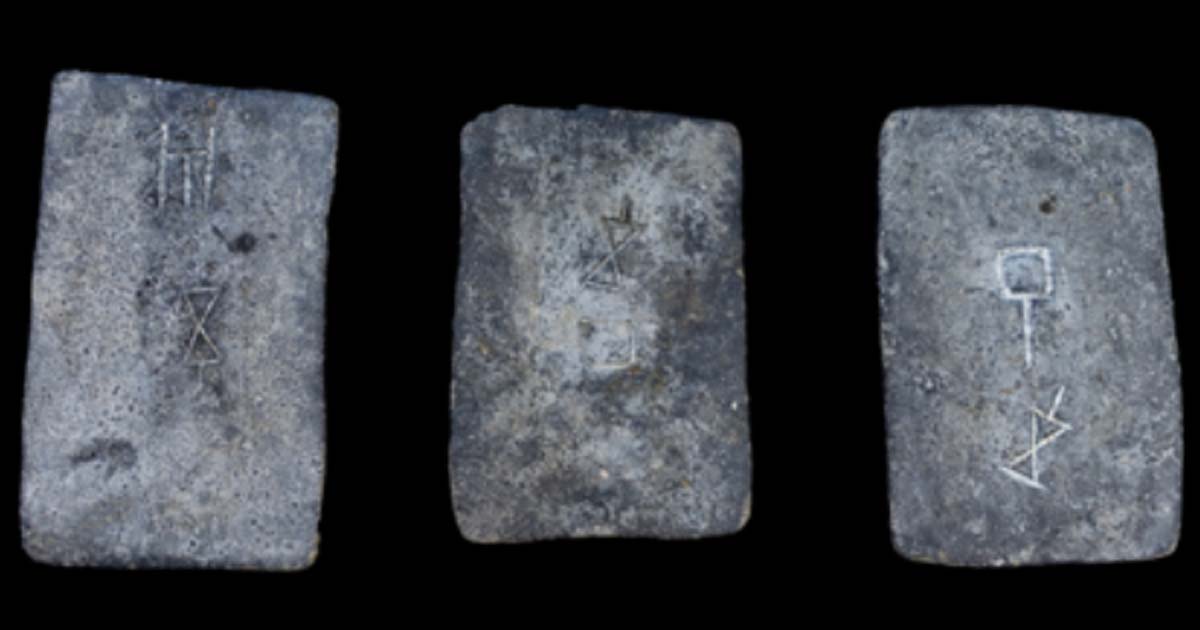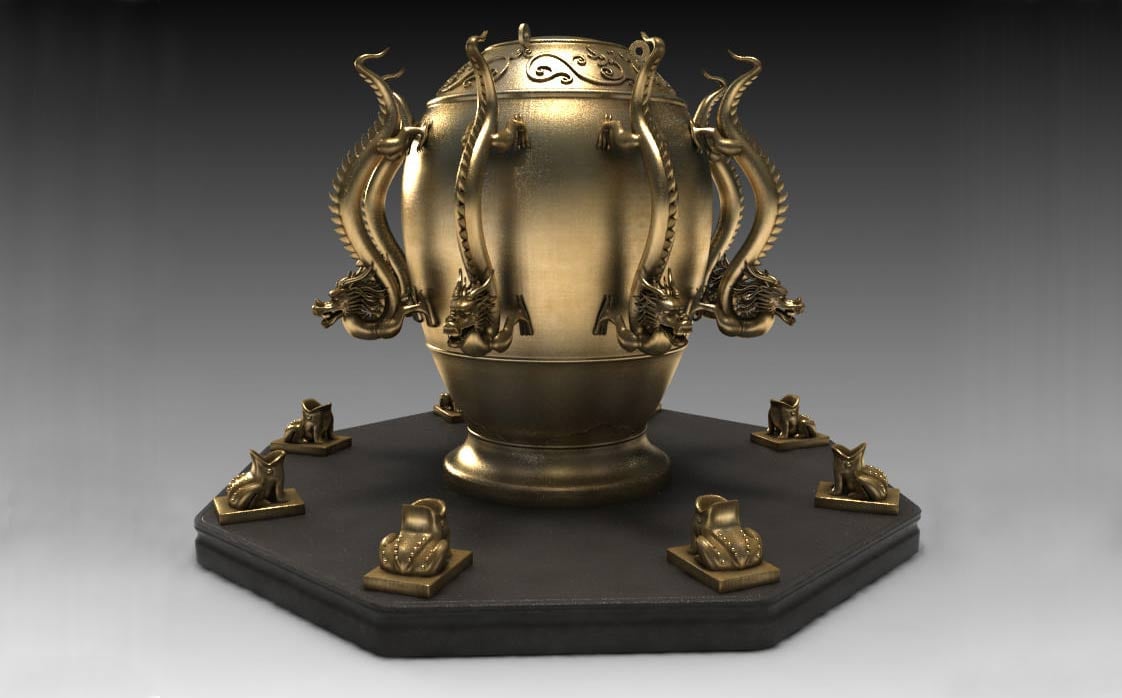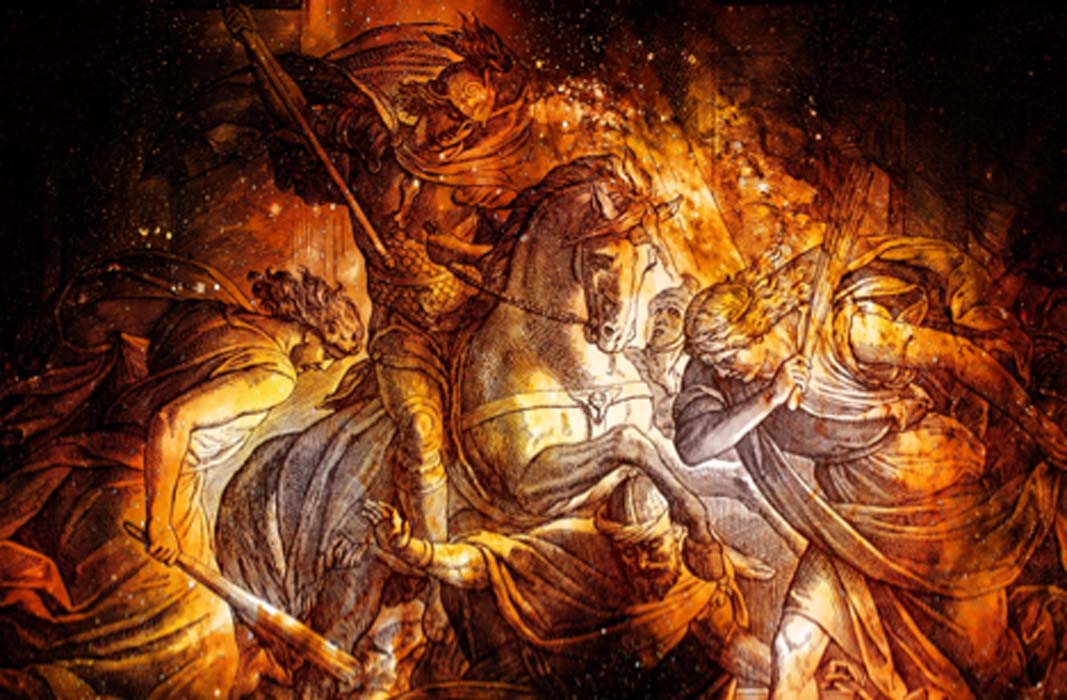via 3 Quarks Daily by Azra Raza: Elizabeth Pennisi in Science:

Raccoon-size Loxolophus and other mammals evolved surprisingly quickly after the end-Cretaceous extinction.
In 2014, when Ian Miller and Tyler Lyson first visited Corral Bluffs, a fossil site 100 kilometers south of the Denver Museum of Nature & Science where they work, Lyson was not impressed by the few vertebrate fossils he saw. But on a return trip later that year, he split open small boulders called concretions—and found dozens of skulls. Now, he, Miller, and their colleagues have combined the site’s trove of plant and animal fossils with a detailed chronology of the rock layers to tell a momentous story: how life recovered from the asteroid impact that killed off the dinosaurs 66 million years ago.
Continue reading
==============================
via Ancient Origins by Ed Whelan

Tin ingots from Hishuley Carmel. Source: PLOS ONE
Researchers have made an astonishing discovery that is transforming our understanding of the Bronze Age . They have established that ancient tin ingots found in Israel actually came from what is now modern-day Britain. Experts believe that they have found proof that tin was traded over long distances some 3,000 years ago. Moreover, the researchers may have solved the mystery of the origin of the tin that was so vital for Bronze Age cultures.
Continue reading
==============================
via Boing Boing by Mark Frauenfelder
Dr. Adrian Smith of the North Carolina Museum of Natural Sciences at North Carolina State University has been raising mealworms as ant food for many years. He had little interest in the creatures, but then starting taking time-lapse photos of them and discovered how truly amazing they are.
Continue reading
==============================
via Interesting Literature
Previously, it was the turn of green and red; now, it’s time to ponder some of the greatest blue poems. Blue is the colour of the bluebell, of the oceans, and of a particular strain of melancholy (we talk of suffering from a bout of ‘the blues’), so it’s of little surprise that poets have written beautifully about the colour blue. Here are ten of the very finest poems about blue things.
Continue reading
==============================
via the OUP blog by Tim Woollings

‘Falling stars as observed from the balloon’. Public domain via Wikimedia Commons.
Among many other, more stereotypical features, Scotland is famous as a place where palm trees can grow. And grow they do, with several proud, albeit slightly weather-beaten examples dotted around the mountainous islands and coasts of the western Highlands, blissfully unaware that they share latitudes with the southernmost Canadian tundra. This feat is often attributed to the gentle, warming influence of the Gulf Stream, bringing tropical seawater right up to the mouths of the lochs. But perhaps there is more to this story.
Continue reading
Oh My, I learned a lot from this!
==============================
via Ancient Origins by Joanna Gillan

A modern replica of Zhang Heng’s famous seismoscope. Photo: Houfeng Didong
Although we still cannot accurately predict earthquakes, we have come a long way in detecting, recording, and measuring seismic shocks. Many don’t realise that this process began nearly 2000 years ago, with the invention of the first seismoscope in 132 AD by a Chinese inventor called Zhang (‘Chang’) Heng. The device was remarkably accurate in detecting earthquakes from afar, and did not rely on shaking or movement in the location where the device was situated.
Continue reading
==============================
via Boing Boing by Cory Doctorow

(Image: Peter Hamer, CC BY-SA, modified)
Early versions of the free/open Unix variant BSD came with password files that included hashed passwords for such Unix luminaries as Dennis Ritchie, Stephen R. Bourne, Eric Schmidt, Brian W. Kernighan and Stuart Feldman.
Continue reading
==============================
via Interesting Literature
In this week’s Dispatches from The Secret Library, Dr Oliver Tearle ponders some of the best of the Anglo-Saxon riddles from the Exeter Book
As I’ve remarked before, it’s a sobering thought that all of the Anglo-Saxon poetry that has survived is found in just four manuscripts which escaped the ravages of time, the pillaging of the Vikings, and the censorship of the Church: the Cotton manuscript (which is our sole source for the long heroic narrative poem Beowulf), the Vercelli book, a collection of manuscripts of the Bodleian Library at Oxford, and the Exeter Book. Of these, the Anglo-Saxon poetry found in half of these, the Vercelli and Bodleian manuscripts, is exclusively religious: indeed, it’s little more than dramatic paraphrases of Old Testament stories or of Saints’ lives, as Michael Alexander notes in his informative introduction to his translation of Anglo-Saxon verse, The Earliest English Poems (Penguin Classics). That leaves the Cotton manuscript (whose Anglo-Saxon poetry comprises Beowulf and nothing more) and the Exeter Book. And it’s the Exeter Book that yields a whole host of smaller masterpieces of Old English verse, from ‘The Dream of the Rood’ to ‘The Battle of Maldon’ to ‘The Ruin’ to ‘The Wanderer’ and ‘The Seafarer’ and the celebrated riddles.
Continue reading
==============================
via 3 Quarks Daily by Azra Raza: Nathaniel Comfort in Nature:

Illustration by Señor Salme
In the iconic frontispiece to Thomas Henry Huxley’s Evidence as to Man’s Place in Nature (1863), primate skeletons march across the page and, presumably, into the future: “Gibbon, Orang, Chimpanzee, Gorilla, Man.” Fresh evidence from anatomy and palaeontology had made humans’ place on the scala naturae scientifically irrefutable. We were unequivocally with the animals — albeit at the head of the line. Nicolaus Copernicus had displaced us from the centre of the Universe; now Charles Darwin had displaced us from the centre of the living world. Regardless of how one took this demotion (Huxley wasn’t troubled; Darwin was), there was no doubting Huxley’s larger message: science alone can answer what he called the ‘question of questions’: “Man’s place in nature and his relations to the Universe of things.”
Continue reading
==============================
via Ancient Origins by Ashley Cowie

Representation of the biblical war mentioned on the altar inscription. Source: fluenta / Adobe Stock.
Two inscriptions found on an ancient carved altar are revealing new information about a rebellion against the Kingdom of Israel that is described in the Bible.
The 2,800 year-old cylindrical stone altar was discovered in a sanctuary within the ancient city of Ataroth in Jordan and it bears two inscriptions referring to a biblical war. Located within a Moabite sanctuary in the ancient city of Ataroth in Jordan during excavations in 2010, the language and script is in ancient Moabite while the numerals are executed in an Egyptian writing system known as Hieratic.
Continue reading
No comments:
Post a Comment